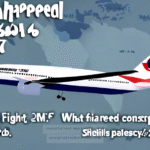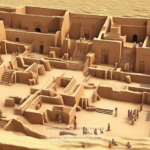What Really Happened During the 1976 Tehran UFO Incident?
What Really Happened During the 1976 Tehran UFO Incident?
The 1976 Tehran UFO incident remains one of the most compelling and unexplained events in the history of UFO sightings. This case not only involved multiple eyewitness accounts, including military personnel, but also led to a series of radar detections and an encounter that has puzzled experts for decades. The significance of this incident lies not only in its dramatic details but also in the broader implications for our understanding of extraterrestrial life and government secrecy regarding UFO phenomena. This post will dissect the incident, offering insights into its historical context, core concepts, and the ongoing debates around it.
Historical Context of the Incident
The Tehran UFO incident took place on September 19, 1976, against the backdrop of a politically charged environment in Iran, just a year before the Islamic Revolution. At approximately 1:30 AM, Iranian military personnel at the Shahrokhi Air Base received reports of an unidentified flying object in the sky. The political climate of the time, combined with the tensions of the Cold War, made the situation even more precarious. The incident has become a focal point for those investigating possible extraterrestrial contact and military encounters with unidentified aerial phenomena (UAP).
The Initial Reports
As reports began to filter in, two F-4 Phantom fighter jets were dispatched to intercept the object. The pilots reported seeing a bright light in the sky, which they described as erratic and capable of incredible speeds. The first pilot, Captain Parviz Jafari, described a “bright object” that seemed to evade his attempts to approach it. On his first attempt to lock onto the target, his aircraft instruments began to malfunction, which left him puzzled and unable to continue the pursuit.
Radar Evidence and Military Involvement
The Iranian military’s involvement added an extra layer of credibility to the incident. The radar operators at the base confirmed that they tracked the object on their radar screens, which was corroborated by the pilots’ visual confirmations. The object appeared to exhibit capabilities far beyond those of conventional aircraft, including sudden accelerations and deceleration, which raised serious questions about its origin. Reports indicated that the radar would lose the signal as the object would change its speed or altitude, further complicating the situation.
Witness Accounts and Eyewitness Testimonies
Eyewitness accounts are critical in the investigation of UFO phenomena. In this case, both military personnel and civilians reported seeing the object. Civilian witnesses noted that the object hovered silently in the sky for several minutes before disappearing. The convergence of multiple accounts from credible witnesses, including military officers, adds significant weight to the incident’s legitimacy. Furthermore, these testimonies often include detailed descriptions of the object’s characteristics, such as its shape and movements.
Core Theories Surrounding the Incident
Several theories have emerged to explain the Tehran UFO incident. Some researchers argue that it was a case of misidentified aircraft, potentially a secret military project from a neighboring country. Others propose that the object was a natural phenomenon, such as a meteorological anomaly. However, the most compelling theory suggests that the incident involved advanced technology, possibly of extraterrestrial origin, given the capabilities displayed by the object and the malfunctioning equipment reported by the pilots.
Government Secrecy and Cover-up Claims
The Iranian government, like many before it, has been accused of downplaying or covering up the incident. The presence of military personnel and the nature of the reports have led to speculations about whether the military was aware of other similar sightings or if they were involved in research related to extraterrestrial technology. In the years following the incident, there have been claims that the U.S. government was also monitoring the situation, which raises questions about international military cooperation in investigating UFOs.
Comparative Incidents and Global Context
To fully appreciate the significance of the Tehran incident, it is useful to compare it to other well-documented UFO sightings. For instance, the Phoenix Lights incident in 1997 and the Rendlesham Forest incident in 1980 share similar elements of military involvement and credible eyewitness accounts. Each of these incidents has been analyzed extensively, and they contribute to a growing body of evidence suggesting that UFOs are a global phenomenon, challenging our understanding of airspace and technology.
Common Misconceptions About UFOs and UAPs
Many misconceptions exist around UFOs and UAPs, often fueled by popular culture and media portrayals. One common myth is that all UFO sightings must be extraterrestrial in origin. In reality, many UFOs can be explained through natural phenomena, military aircraft, or atmospheric conditions. Additionally, the term “UFO” does not inherently imply that the object is alien; it merely signifies that it is unidentified. This distinction is crucial in maintaining a scientific approach when investigating such phenomena.
Best Practices for Investigating UFO Sightings
For those interested in investigating UFO sightings, several best practices can enhance the validity of the research. First, gathering multiple eyewitness accounts can provide a more comprehensive view of the incident. Second, utilizing technology such as radar data and photographic evidence can substantiate claims. Lastly, collaborating with experts in psychology, meteorology, and aviation can help in analyzing reports critically. This multidisciplinary approach can lead to more credible findings.
The Future of UFO Research and Ongoing Developments
As technology advances and more people become interested in the study of UFOs and UAPs, the future of research looks promising. Governments, including the U.S. military, have begun to take these phenomena seriously, leading to the establishment of dedicated task forces and research initiatives. Public interest has surged, prompting the release of previously classified documents and encouraging transparency. This shift may eventually lead to a clearer understanding of unidentified aerial phenomena and their implications for humanity.
Conclusion: The Enduring Mystery of the Tehran Incident
The Tehran UFO incident remains one of the most significant unexplained encounters in the history of UFO sightings, marked by credible eyewitness accounts, military involvement, and radar evidence. While theories abound, the lack of definitive explanations continues to fuel debates about extraterrestrial life and government transparency. The incident serves as a reminder of the mystery surrounding UFOs and the importance of rigorous investigation and open dialogue. As we advance into an era of renewed interest in UAPs, the Tehran incident will undoubtedly remain a focal point for researchers and enthusiasts alike.
Other Articles
Recent Posts
- What Happened to Flight MH370? The Conspiracy Theories That Still Haunt Us
- What Secrets Lurk Within the Walls of the Infamous Trans-Allegheny Lunatic Asylum?
- What Evidence Supports the Existence of Bigfoot in the Pacific Northwest?
- What Happened to the Indus Valley Civilization? Unraveling the Mysteries of Ancient Urban Life
- Can Telepathy Be Scientifically Proven Through Laboratory Evidence?







